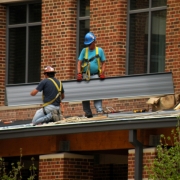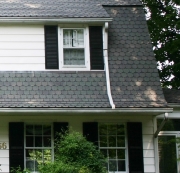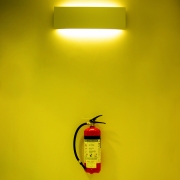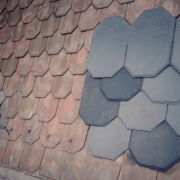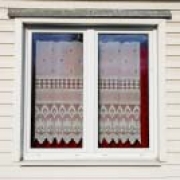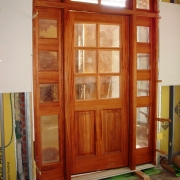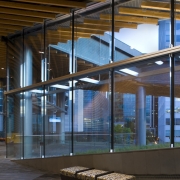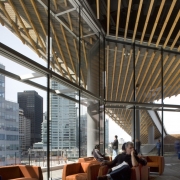Standing Seam Sheet Metal Roofing
Standing seam sheet metal roofing refers to a flat metal panel that is seamed or interlocked together along the edges of a turned up vertical leg. There are four basic ways the vertical legs of adjoining panels can be secured or seamed. They can be mechanically seamed, or have snap together seams, tongue and groove seams, or hooked seams. Standing seam metal roofing panels can be custom fabricated in the shop or roll-formed on-site. Metal roof systems fall into two categories: structural and architectural. A standing seam sheet metal roofs is an example of an architectural system. These roofs are designed to be a watershed system rather than a water barrier system, and require slopes of 3:12 (or 14 degrees) or greater. Architectural roof panels generally have a flat surface with a ¾ inch to 1 ½ inch raised vertical seam running the length of the panel.
